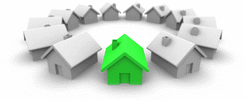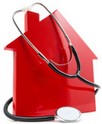


Medical Risk Factors Contributing To Falls In The Home:
The physical and cognitive changes that eventually occur with aging can contribute to the risk of falls in the home. These changes can be metabolic, musculoskeletal, sensory, and neurological. It probably comes at no surprise to you that seniors over the age of 80 are the most likely to fall in the home and be injured. However, it is not so much age that increases the risk of falls, but the physical changes resulting from age:
A lack of physical fitness causing a decrease in muscle strength (especially in the lower part of the body) is one of the most common causes of falls in the home. In fact, the AGS (American Geriatrics Society) has determined that it can increase the risk of a fall by four or five times. A loss of muscle strength can affect coordination, balance, and flexibility, making it difficult for some to perform their everyday activities and tasks.
Age-related changes in neural and sensory systems is another factor leading to instability and falls. These changes can impair one's ability to maintain an upright stance, or to react in time to a sudden loss of balance. Neurological issues such as Parkinson's disease, or hemiparesis due to stroke, can exacerbate these negative changes.
Negative changes to otherwise normal vision can contribute to falls. Vision disorders such as reduced acuity, contrast sensitivity, or altered depth perception can increase the risk of a fall by nearly three times. Other visual disorders such as cataracts, myopia, or intolerance to glare can also increase the risk of a fall in the home, although to a lower degree.
Chronic illness such as arthritis can double the risk of a dangerous fall. Low blood pressure (aka hypotension) is associated with nearly 20% of all falling accidents in the home. Osteoporosis does not increase the risk of a fall, but does increase the risk of fractures as a result of a fall. Other chronic disorders that can contribute to falls include cardiovascular conditions such as arrhythmias, and urinary incontinence.
Individuals with age-related physical disabilities (including hearing disorders, gait disorders, lack of sensation in feet and limbs, poor balance, and/or dizziness) are also more likely to have a fall in the home.
Home | Contact Us | Sitemap | Privacy Policy | Medical Alert Basics | Medical Alert Reviews | Submit A Review | Home Safety | Accident Prevention Independent Living Aids | Independent Living Advice
Copyright 2008-2010 Medical Alert Reviews
Copyright 2008-2010 Medical Alert Reviews


More Medical Alert Resources On MedicalAlertReviews.Com:
Medical Alert Basics
Special Features Of Medical Alert Systems
Guide To Independent Living
Home Safety
Preventing Accidents In The Home
Special Features Of Medical Alert Systems
Guide To Independent Living
Home Safety
Preventing Accidents In The Home
